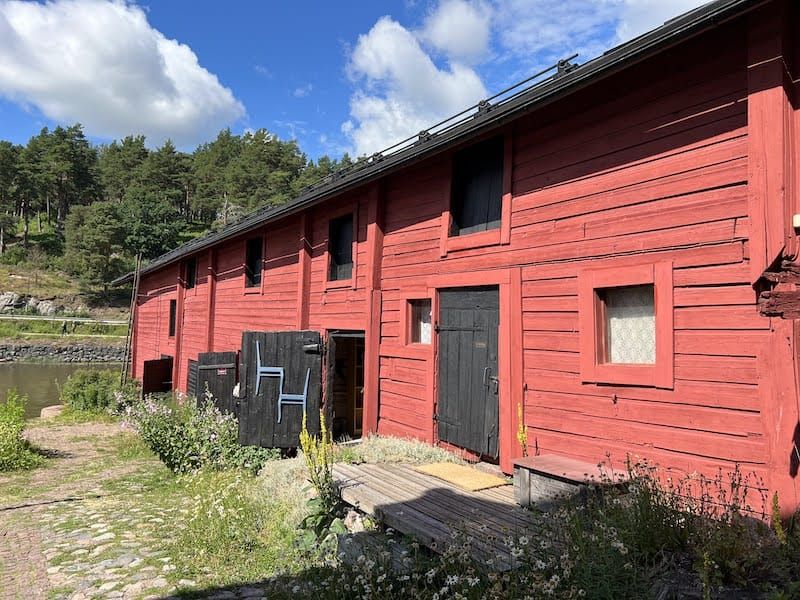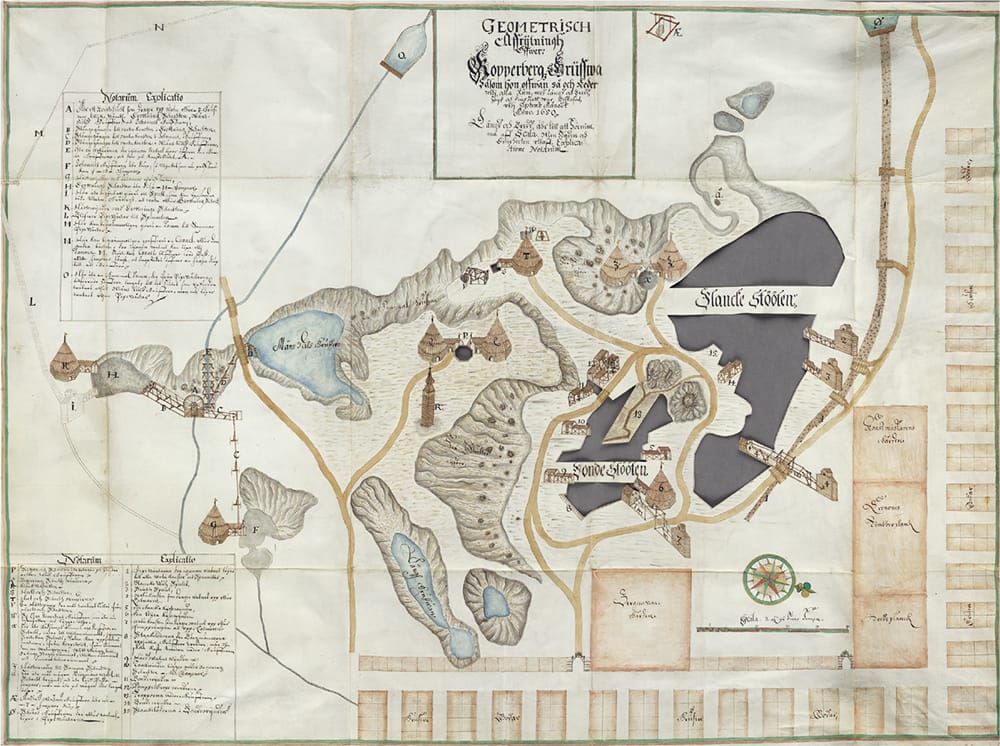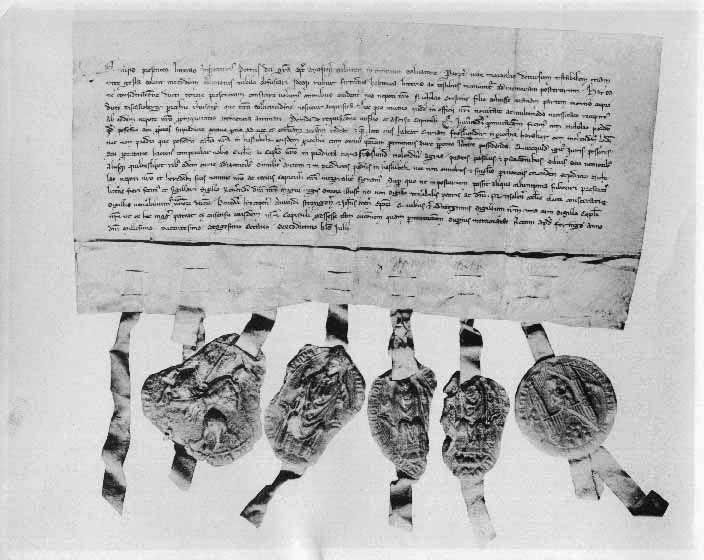Falu Red and the Rise and Fall of an Empire

Falu red is the particular shade of red paint which most barns in North America are painted. It’s the ubiquitus Scandinavian color of farms and homes in the countryside and older buildings. In Sweden its called Falu Rödfärg, in Finland it’s Punamulta.
In fact the Finnish expression ‘punainen tupa ja perunamaa’ or ‘a red house and a potato field’ refers to the kind of idyllic country life a direct allusion to a punamalta colored house in the country so embedded in the culture it has become.
How did one colour come to define a certain type of building across countries and continents, even becoming a cultural cliché?
The Falu Mine
The red paint was made as a side product from the process of mining Copper in one mine in Sweden, the Falu Gruva or Falu mine is a copper mine. It closed in 1992 1 but before this it was being mined for over a millenium. 2
 Early plan of my Stora cuparberg mine, Royal Library, Stockholm.
Early plan of my Stora cuparberg mine, Royal Library, Stockholm.
Rise of an Empire
At the height of production in the 1600’s Falu mine accounted for 2/3rds the copper production in Europe sometimes more. The money from the mine allowed Sweden despite being a small country on the edge of Europe to become a European superpower.3 Wars against Russia, Denmark, Norway, and the Polish-Lithuanian commonwealth effectively left Sweden in control of the Baltic and it played a huge part in the thirty years war which did much to shape modern Europe. During this time the Swedish Krona even moved from the gold to the copper standard.
However while at its height the mine had employed over a thousand miners production started to decline in the 1700’s and with it the fortunes of the Swedish Empire started to decline also.
The empire was effectively over after the Great Northern War (1700-1721) and it continued to loose territories after that. The dizzying rise and decline of a relatively backward and small state has been commented on much, but one theory is often overlooked, Sweden became for a short time the first mining and energy superpower. It’s near copper monopoly in the 16 and 1700’s gave it the money to play on the European stage in a way it that was not possible before or after.
 View of the Falu cups mine from the northwest. By Johan Tobias Geisler, 1718. Photo: Nordiska museum. License: Public domain mark.
View of the Falu cups mine from the northwest. By Johan Tobias Geisler, 1718. Photo: Nordiska museum. License: Public domain mark.
Falu Red
As the income from copper mining started to decline a way to make a red paint from the waste product of hundreds of years was found. The sludge from the copper mine was combined with linseed oil and rye flour to make an excellent weather-proof paint which also allowed the wood to breathe. Farmers began to paint their barns the colour and it quickly spread over Scandinavia.
In the U.S.A and Canada too the barns are often the same red color. There are a few reasons for this. Maybe it was a preference for the same color europeans brought over with them. Also paint was made in a similar way so any earth with iron oxide in it is going to look this colour and which contributes to the properties of the paint which makes it so practical. The U.S.A was soon producing its own Falu red type paints from local iron oxide sources in Georgia, Pennsylvania, Virginia, Alabama, California, Iowa and Vermont.
Significance
The mining of copper in a relatively remote part of Europe is also a slice of industrial history. Falu Mine, already active during Roman times was formed as a limited company sometime in the 13thC making it one of the oldest companies still in existance on the planet. A share granted to the Bishop of Västerås dated June 16 1288 is the oldest preserved share certificate in the world. The company is still in existence its current name Stora Enso.
 1/8 share of the Stora Kopparbergmine, dated 16 June 1288.
1/8 share of the Stora Kopparbergmine, dated 16 June 1288.
What are the criteria for a societies to industrialise? Technology, and increased energy production are required, but also in terms of organisation then the building financial management structures also has to be one. 4 Falu is one of the places modern corporate structures of ownership originated.
Connections
The Copper trade brought together Scandinavian interests with the great European empires, copper being a fundamental cog in the trans-atlantic slave trade. 5 Then again later Copper became a key metal in the transition to electric power. So the copper Industry was very much at the heart of the history of trans-atlantic slave trade and industrialisation although it’s significance is often overlooked.
Conclusion
Today while Falu red has been written about quite widely, the backstory of the origins of the paint and its links is not so well known. It’s a multi dimensional story that a hole dug in a remote part of Sweden can tell of the rise and fall of empires, the industrialisation of the world, the enslavement of millions and the color of a humble barn. The Falu mine is now a UNESCO World Heritage site.
Falu Red
Falu red is HEX 801818, RGB (128, 24, 24), NCS S5040-Y80R and is still produced at the mine with reserves for the next hundred years.

Further Reading
- Scandinavian Copper Gives a great overview of the Copper mining industry in Scandinavia.
- Falu Red, The Color of Bucolic Barns and Mummified Swedes - The Awl
- Mining Strategies in Sweden Historically
References
Weihed, P. How commodity prices and technical development has influenced exploration strategies: a case study from Sweden. Miner Econ 35, 409–427 (2022). https://doi.org/10.1007/s13563-022-00299-2
Bindler R, Karlsson J, Rydberg J (2017) Copper-ore mining in Sweden since the pre-Roman Iron Age: lake sediment evidence of human activities at the Garpenberg ore field since 375 BCE. Journal of Archaeological Science 12:99–108
8th December 1992↩︎
There is evidence to push back mining in this area to 400BC see Binder et al 2017↩︎
‘The mines economic and political importance grew all the time, mostly during the 15th and 16th centuries to culminate in the seventeenth century. During the latter part of the sixteenth century, new rich ore deposits were discovered. Around 1650, 3,000 tonnes of raw copper were produced from the mined ore in Sweden, and occasionally the rock accounted for two thirds of world production. The income from Kopparberget was a prerequisite for Sweden to be able to establish itself as a great power in Europe. Copper was the country’s most important export product and the mine greatly strengthened the country’s finances, which made it possible to purchase ships and equipment for the wars that were fought. Copper plates sold to the countries of Europe came to cover the roofs of churches, castles and palaces’-reference↩︎
For example the rise of the British Empire and it’s ability to subsidise it’s wars with Debt has been covered widely.↩︎
Copper was used both as a form of currency for slaves and extensively in the developing technology required on slave holding sugar plantations↩︎